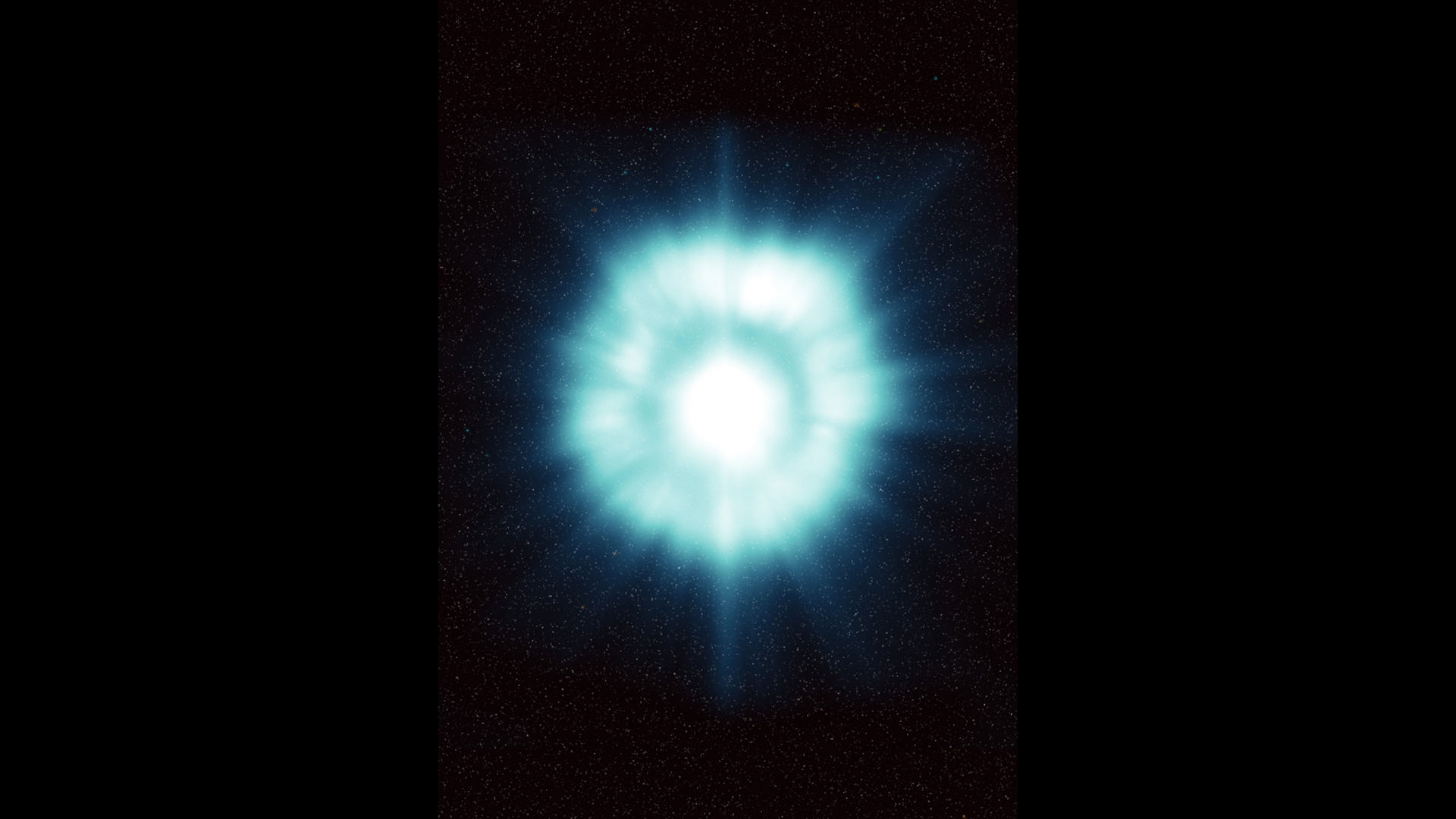Nuclear 'pasta' cooked up by dead stars could unravel the secrets of stellar afterlife
In the extreme hearts of neutron stars, fundamental particles are twisted into strange 'pasta' shapes that could reveal untold secrets about how dead stars evolve.

Imagine cooking pasta at a temperature of over a trillion degrees. But this isn't just any ordinary Sunday-night dish; it's the "nuclear pasta" found inside neutron stars. Researchers have just revealed that these strange nuclear shapes penetrate far deeper into the cores of neutron stars than we ever thought possible, and that this can radically alter the properties of those dead stars.
Neutron stars are the very definition of extreme. The leftover cores of some of the most massive stars in the universe, they usually cram a few suns' worth of material into a volume no bigger than Manhattan. To achieve those incredible densities, the matter within them is so compressed that atomic and even nuclear bonds are broken. It's just a giant, hot sea of free-floating neutrons, electrons and protons, bound together through the complex interactions of the strong nuclear force.
Given these extreme conditions, astronomers still do not understand exactly how the matter of neutron stars composes itself. One possibility is that neutron stars are really hybrids. Their crust and outer layers consist almost entirely of neutrons, with some electrons and protons thrown into the mix. But their cores experience such extreme pressures and densities that even neutrons break down, leaving behind a dense semi-liquid of quarks — the most fundamental constituent of matter.
Related: James Webb Space Telescope detects 1st evidence of carbon on Jupiter's icy moon Europa
The relationship between the quark core and neutron outer layer determines the overall properties of the neutron star: how it spins, how it vibrates when the outer crust cracks, and how it behaves when it collides with other neutron stars in an explosion known as a kilonova. Neutron stars that have a sharp cutoff between the core and outer layers will behave differently to neutron stars with a gradual mixing between those regions. However, as we don't have any neutron stars nearby to crack open and investigate, we have to turn to theoretical models to try to understand their interiors.
A pair of theoretical physicists have taken up the challenge. In a paper submitted Aug. 26 to the preprint database arXiv, they applied the latest models of quark and neutron behavior to the interior of neutron stars. In their work, which has yet to be peer-reviewed, they focused on this elusive and complex transition zone between the quark core and neutron outer layers, especially when it comes to the appearance of… pasta.
This is no ordinary macaroni. The nuclear "pasta" in this transition zone is made of compact clumps of neutrons immersed in a sea of quarks. Their appearance comes from the complex interplay of strong nuclear and electromagnetic forces, which cause the neutrons to bend and twist into a variety of odd shapes throughout the transition zone. When physicists first discovered these structures, they found a variety of interesting shapes: clumps, tubes, rods and bubbles, resembling the fantastic variety of pasta shapes found in Italian cuisine. (The metaphor worked even better once they realized that the "nuclear pasta" was immersed in a hot bath of quarks, like a boiling pot of water.) Finally, at deep enough depths, the pressures become too intense and the pasta disintegrates into a sea of quarks.
Breaking space news, the latest updates on rocket launches, skywatching events and more!
The researchers looked at the important role of curvature tension, which is the resistance of a curved shape to transformations that try to straighten it out. Curvature tension is similar to the more familiar surface tension, where a liquid resists external forces that try to penetrate its surface.
The researchers found that curvature tensions can favor some shapes, enabling the now-"cooked" pasta to reach deeper into the quark core, while other shapes are disfavored. Specifically, they found that tubes and bubbles can survive to far higher densities than previously thought, thanks to the contributions of the curvature tension, while drops and rods don't last for long.
These may seem like small changes, but they can potentially have big impacts. When neutron stars collide, leading to kilonova explosions, the details of that explosion — most importantly, the ability for that explosion to produce many of the heavier elements on the periodic table — depend on the neutron star interiors. Differences in how far the neutrons reach into the core, and the shapes they take, can change how these explosions evolve.
The next step for the researchers is to flesh out this line of thinking and investigate how we can use kilonova explosions to reveal the detailed structures of neutron star interiors, especially all the tasty neutron shapes.

Paul M. Sutter is a cosmologist at Johns Hopkins University, host of Ask a Spaceman, and author of How to Die in Space.


